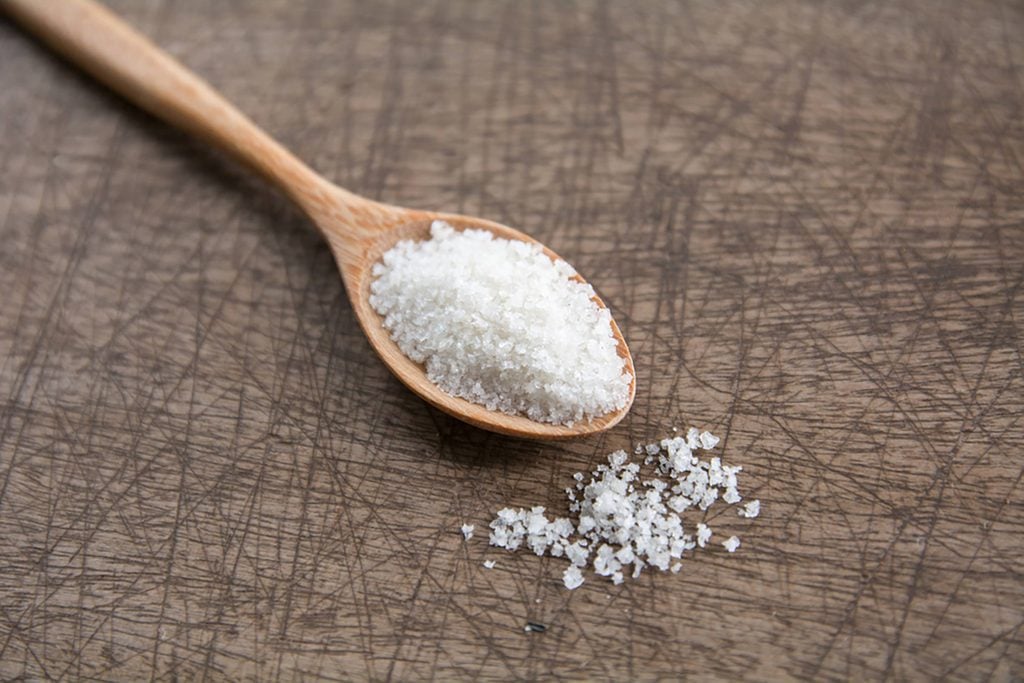Iodized Salt Is No Longer a Required Part of a Healthy Diet—Here’s Why
Updated: Nov. 09, 2020

Iodine is an important element for brain, thyroid, and immune function, so why have we stopped iodizing salt? News flash: It could do more harm than good.
It’s no secret by now that eating too much salt can wreak havoc on your body. But what the heck is iodized salt, and should you be buying it?
“Iodized salt is salt with added iodine, a mineral we need for a healthy thyroid,” says Dawn Jackson Blatner, RDN, author of The Superfood Swap, Chicago, IL. “Iodine is added to salt to prevent an enlarged thyroid.”
Most adults need about 150 mcg of iodine per day in order to avoid a deficiency, according to experts. Thankfully, Americans are what’s called “iodine sufficient,” meaning their diet is varied enough to provide the necessary levels of iodine, even if they don’t use iodized salt, according to the National Institutes of Health’s Office of Dietary Supplements.
But don’t relax just yet. Iodine deficiencies can be pretty scary, and if you are pregnant, you need to be particularly cautious. The need for iodine increases during pregnancy, because low iodine levels can endanger your baby’s mental development. Doctors often advise pregnant women to eat dairy products and take vitamin supplements, but you should see your own doctor before making any radical changes to your diet. (Still, you can safely stick with these snacks to eat while pregnant.)
For everyone else, no need to worry too much about your iodine levels. And while it’s true that you can get your daily intake of iodine from iodized salt, that’s not always the healthiest solution. (Find out what the healthiest salt on the market is.) To reach the recommended level, you would need to eat more than half a teaspoon of iodized salt a day, which is two-thirds of the suggested upper limit of sodium (1,500 milligrams) recommended by the American Heart Association and roughly half of the upper limit (2,300 milligrams) recommended the Dietary Guidelines for Americans. (These are the 7 signs you’re eating too much sodium.)
“These days, many people buy sea salt that doesn’t have iodine, so they need to get iodine from other sources,” says Blatner. Iodine-rich foods include seaweed, cod, yogurt, milk, and eggs. Multivitamins are also rich in iodine. Make any or all of these foods a staple in your diet for an iodine-sufficient life. (Here’s what you need to know about Himalayan pink salt.)
